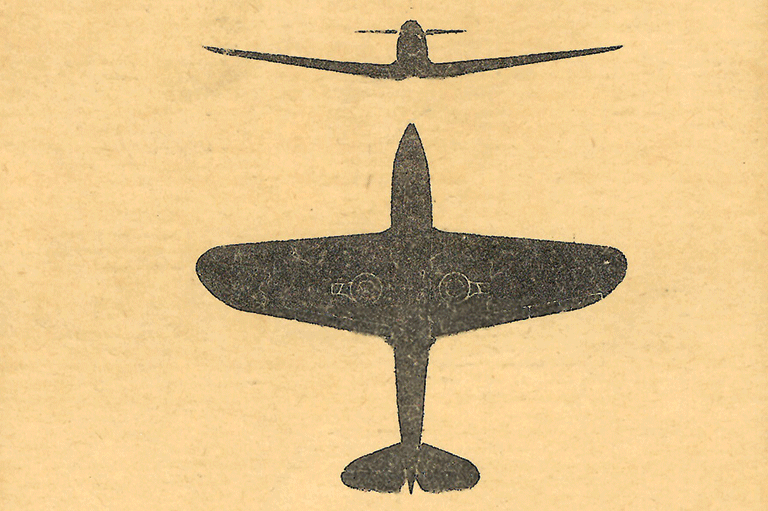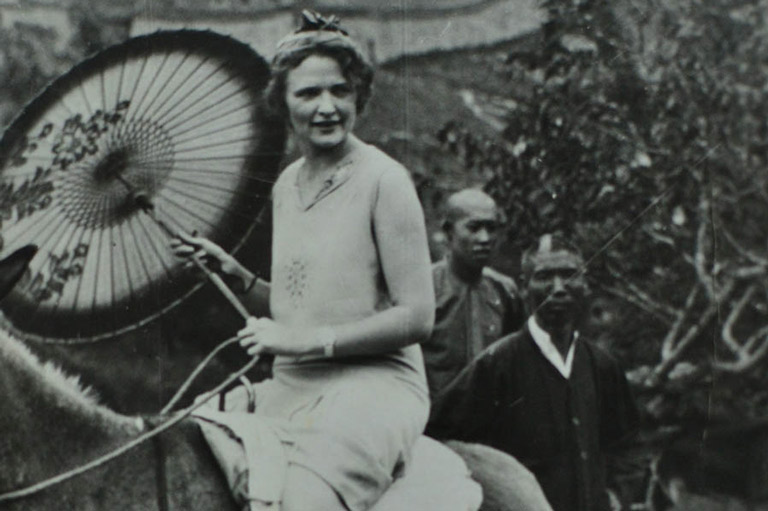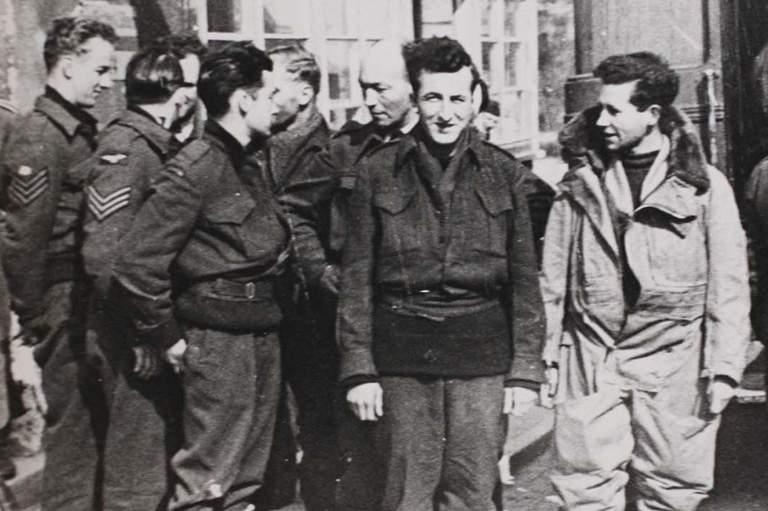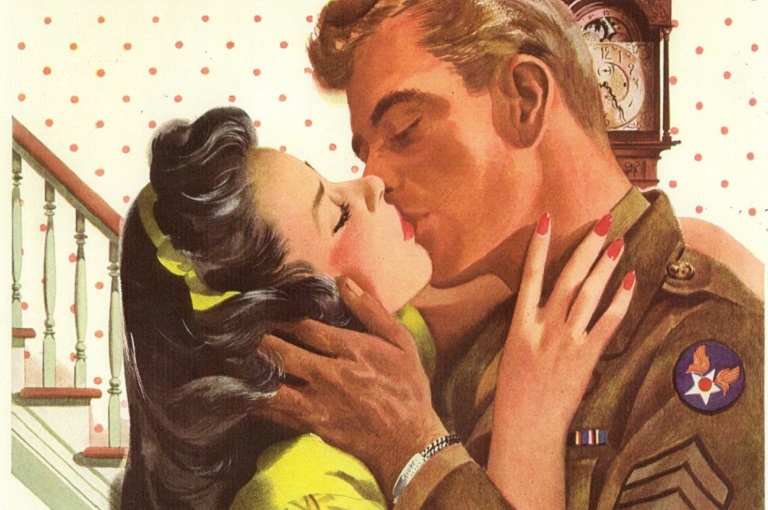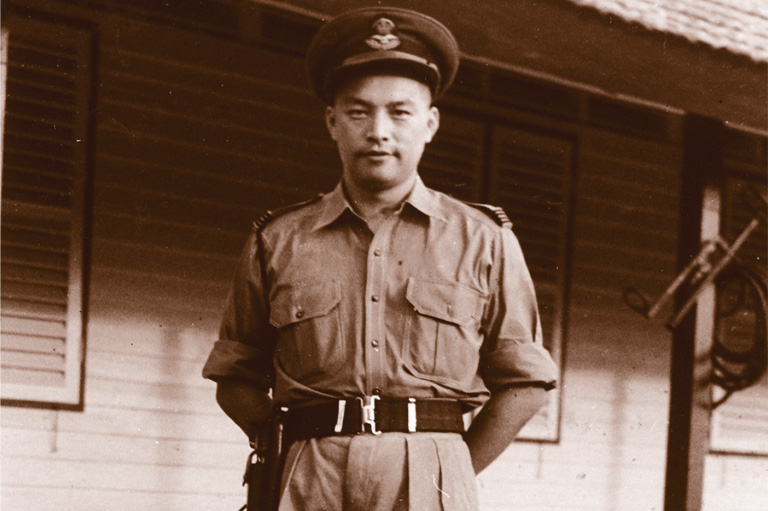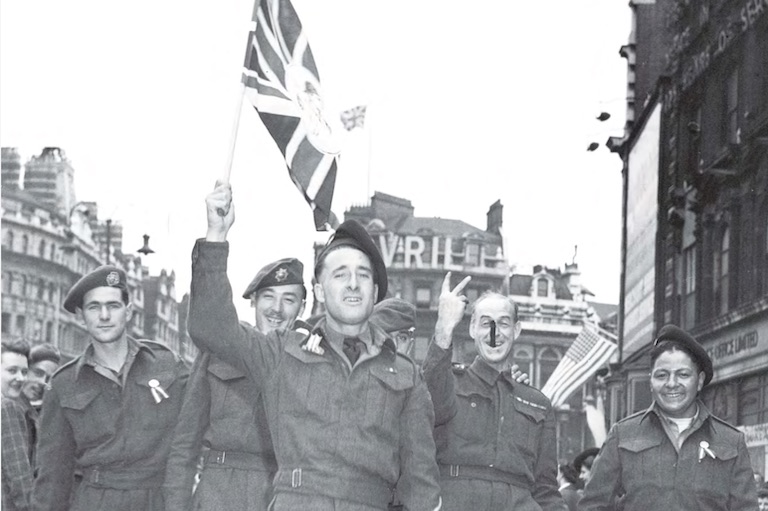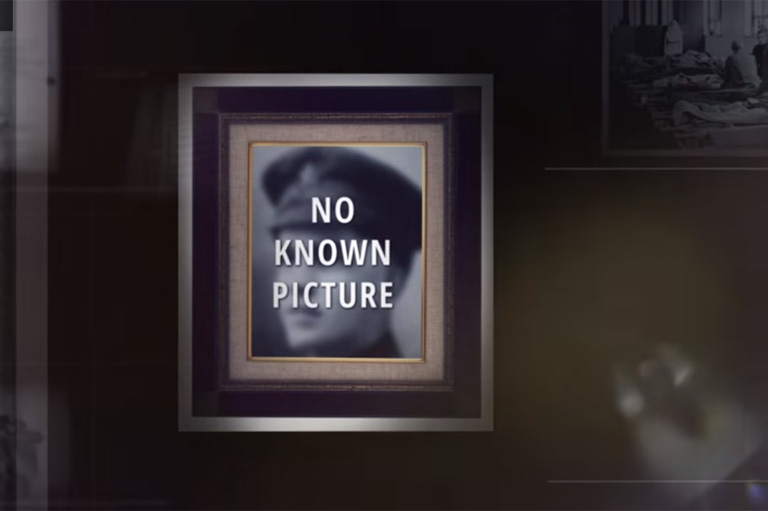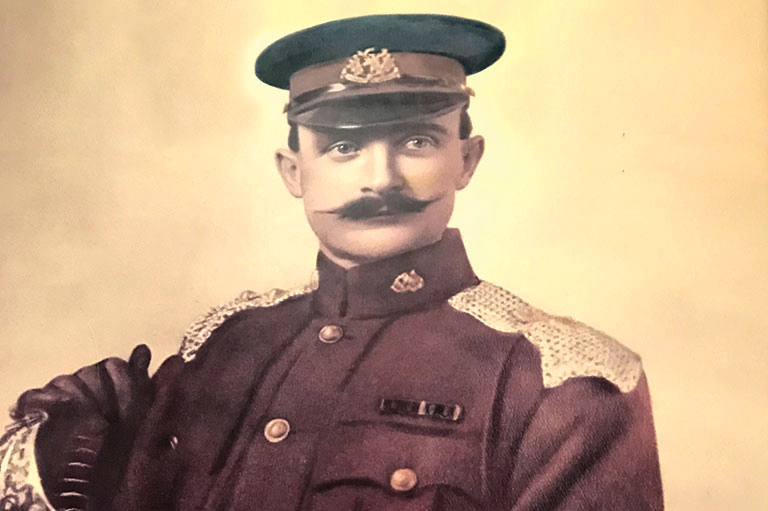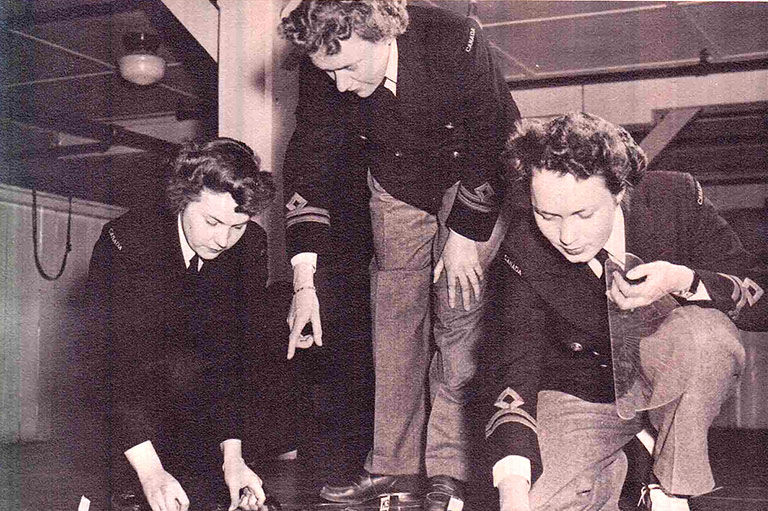On All Fronts
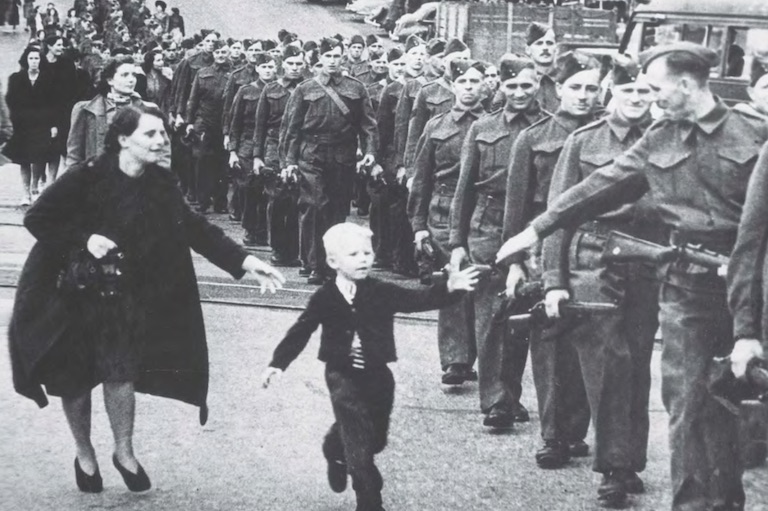
When Britain and France went to war with Germany on September 3, 1939, Canada had a decision to make: Stand with its allies or stay neutral. Canadians chose war.
Tens of thousands enlisted in the army, navy, and air force, but Canada was deeply unprepared. Even as our government sent troops to defend England, shored up defences on Canada’s coasts, and engaged in naval convoy work, the fall of France in June 1940 to the mechanized and marauding German forces came as an utter shock.
Stunned by France’s defeat, the Liberal government of William Lyon Mackenzie King ushered in limited conscription for home defence. With much of continental Europe occupied, a new resilience — tinged with panic — drove the creation of new military units and an intense acceleration of weapons production. The shocking German victory, and the follow-on threat to Britain by attacking aerial armadas, forced Canada to expand its commitment rapidly.
Canadians would go on to serve and to fight around the world: in the Pacific and Far East, especially in Hong Kong and Burma; in the Mediterranean and Italy; on the oceans, primarily in the crucial Battle of the Atlantic; and in the air war to defend Canada and Britain, and then to take the war to the Germans in the skies over many countries.
Finally, Canada made an immense contribution in the land campaign to liberate Europe, which began on D-Day, June 6, 1944, and continued in tooth-and-nail combat through France, Belgium, the Netherlands and Germany.
As James Alan Roberts, a pre-war ice cream salesman who rose in the army to the rank of brigadier, wrote after the war, “Canada is not a warlike nation [but] we played an unbelievably important role ... in the defeat of Hitler’s Germany.”
Unlike the United States, Canada was engaged with the war from the start. The Americans initially stayed neutral, believing that North America was safe from invasion and that the calamity in Europe did not demand the sacrifice of American lives. That changed with the Japanese surprise attack on Pearl Harbor, Hawaii, on December 7, 1941, and German dictator Adolf Hitler’s ill-advised declaration of war on the United States a few days later.
The Americans were not ready. On the East Coast, German U-boats savaged shipping along the seaboard from early 1942. Fortunately, by then the Royal Canadian Navy had won hard-earned experience in fighting the enemy and was able to assist the beleaguered Americans.
Both countries were involved in protecting the convoys across the Atlantic or in the Caribbean, although the Americans increasingly siphoned off their naval forces for the war in the Pacific. The Canadian navy and air force took up the slack.
Canadian corvette warships again assisted the Americans in North Africa, and the two countries fought together in Sicily and in mainland Italy, although rarely side-by-side. Off the west coast of North America, Americans and Canadians launched an invasion to take back the Japanese-occupied Kiska Island, part of the Aleutian chain of Alaska, in late 1943.
In Italy and France, Canadians and Americans fought together from under a unique 1st Special Service Force, also known as the Devil’s Brigade.
Canadian bombers attacked the same targets as the American bombers, while American divisions fought alongside and sometimes within General Harry Crerar’s First Canadian Army in 1945.
-
 The Spirit of Canada’s Women, a Second World War recruiting poster, depicts members of the Canadian Women’s Army Corps marching alongside the ghostly image of the French medieval military heroine Joan of Arc.CWM 19750251-008
The Spirit of Canada’s Women, a Second World War recruiting poster, depicts members of the Canadian Women’s Army Corps marching alongside the ghostly image of the French medieval military heroine Joan of Arc.CWM 19750251-008 -
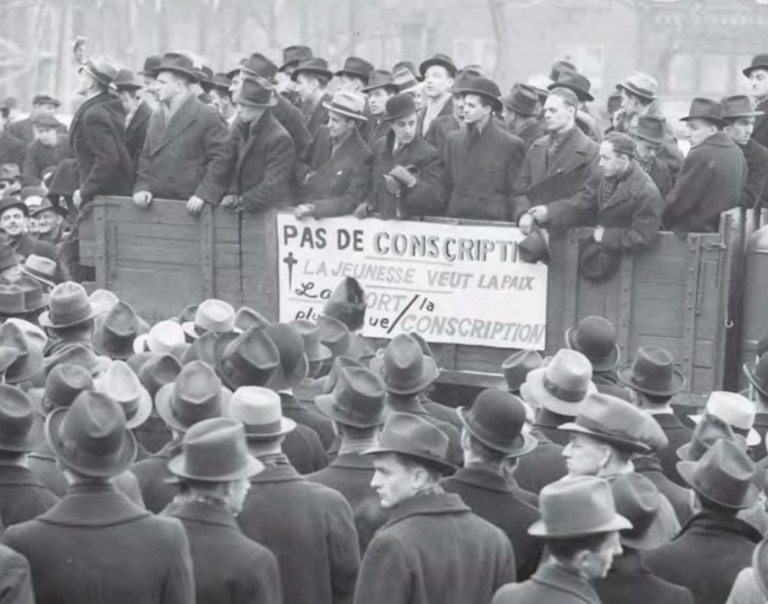 Students of the Université de Montréal protest against conscription in 1939.Library and Archives Canada PA-107910
Students of the Université de Montréal protest against conscription in 1939.Library and Archives Canada PA-107910 -
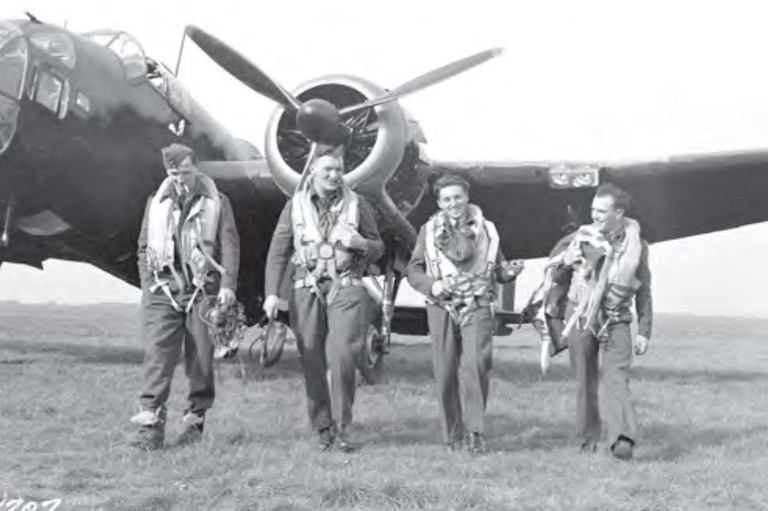 Members of a Canadian bomber squadron are shown in front of their Hampden aircraft in Canada in 1941.Library and Archives Canada E011213294
Members of a Canadian bomber squadron are shown in front of their Hampden aircraft in Canada in 1941.Library and Archives Canada E011213294 -
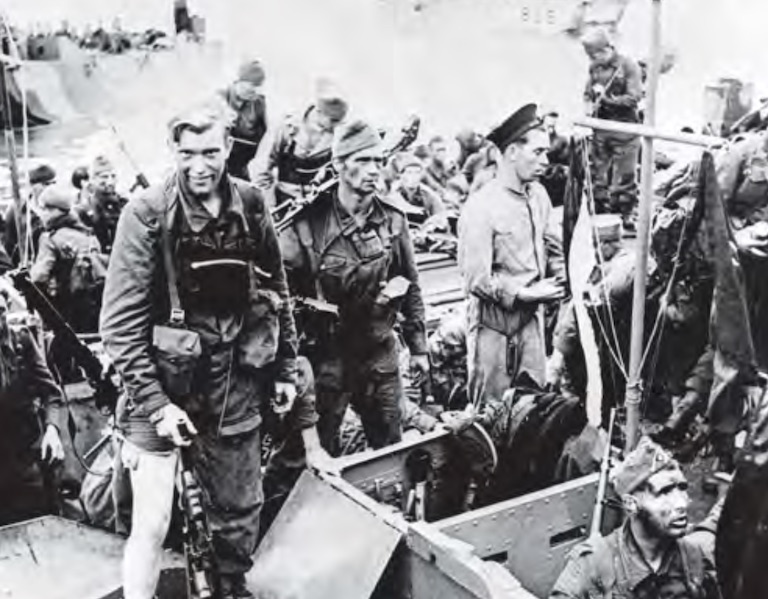 Canadian soldiers who took part in Operation Jubilee, the disastrous raid on Dieppe, France, return to England on August 19, 1942. The Canadians suffered 907 killed, while another 2,460 were wounded, and 1,946 were taken prisoner.Library and Archives Canada 3592322
Canadian soldiers who took part in Operation Jubilee, the disastrous raid on Dieppe, France, return to England on August 19, 1942. The Canadians suffered 907 killed, while another 2,460 were wounded, and 1,946 were taken prisoner.Library and Archives Canada 3592322 -
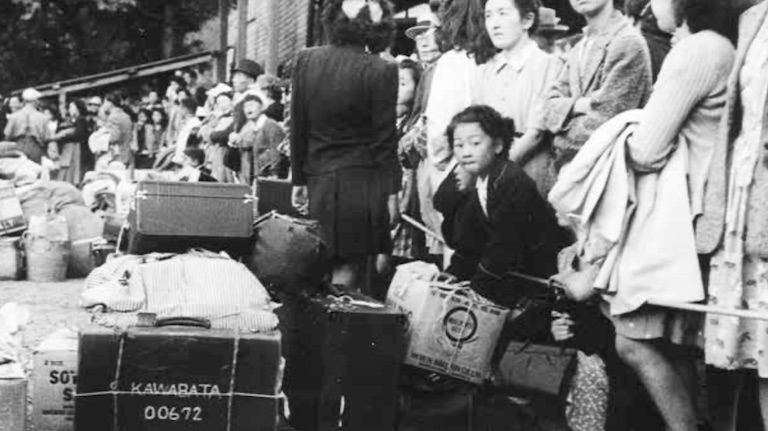 Japanese Canadians at Slocan City, B.C., who were allowed to take only whatever possessions they could carry, await deportation to Japan in 1946.Tak Toyota/Library and Archives Canada C-047398
Japanese Canadians at Slocan City, B.C., who were allowed to take only whatever possessions they could carry, await deportation to Japan in 1946.Tak Toyota/Library and Archives Canada C-047398 -
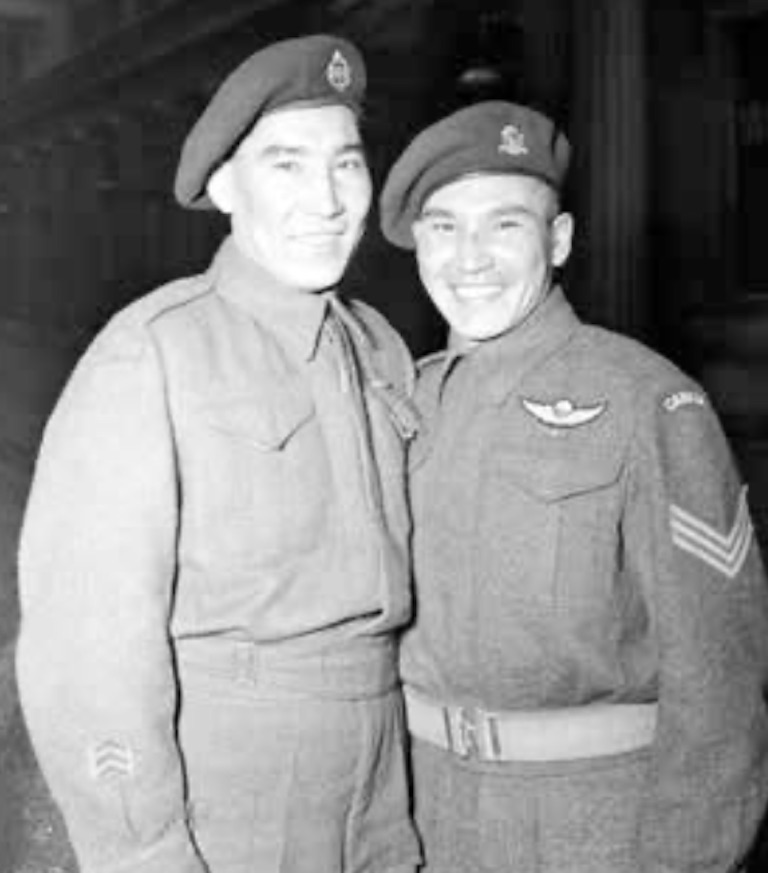 Sergeant Tommy Prince, right, stands with his brother, Private Morris Prince, left, at an investiture at Buckingham Palace in London, England. Prince is one of the most decorated Indigenous soldiers in Canadian history.Library and Archives Canada 3191550
Sergeant Tommy Prince, right, stands with his brother, Private Morris Prince, left, at an investiture at Buckingham Palace in London, England. Prince is one of the most decorated Indigenous soldiers in Canadian history.Library and Archives Canada 3191550 -
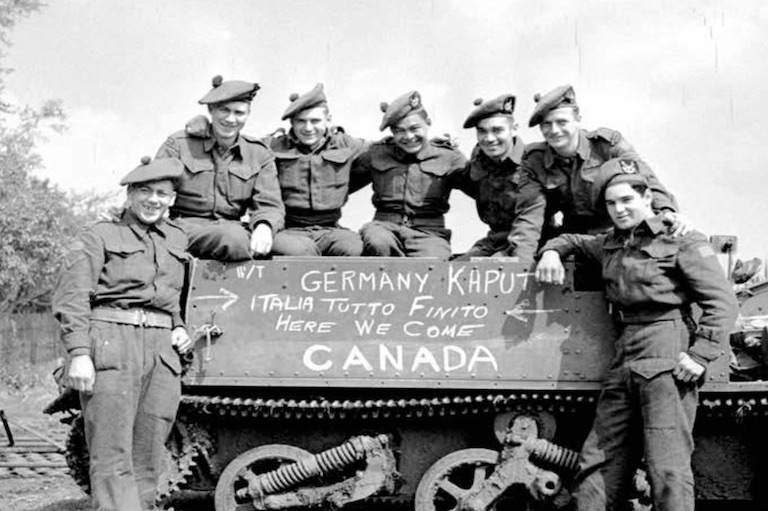 Members of the Seaforth Highlanders of Canada pose in the Netherlands on May 5, 1945, with a universal carrier that bears graffiti celebrating the defeats of Italy and Germany in the Second World War.Library and Archives Canada 3524685
Members of the Seaforth Highlanders of Canada pose in the Netherlands on May 5, 1945, with a universal carrier that bears graffiti celebrating the defeats of Italy and Germany in the Second World War.Library and Archives Canada 3524685
In all, 1,086,343 Canadians served in uniform, along with twelve thousand merchant navy sailors who were only later considered veterans. By war’s end, some forty-five thousand Canadians had been killed and another fifty-five thousand had been injured.
Almost everyone in Canada was affected by the war, whether they assisted in the many British Commonwealth Air Training Plan bases and airfields, worked in the essential war industries, were patriotically involved in raising money, or grieved the loss of family members and friends.
This generation served and bled for victory. Whether at the many fighting fronts or backing the attack from home, Canadians understood the importance of defeating Hitler and his minions. They mobilized like never before, and the country was transformed due to their unwavering commitment to victory in this necessary war.
Themes associated with this article
Advertisement
You might also like...

Beautiful woven all-silk bow tie — burgundy with small silver beaver images throughout. This bow tie was inspired by Pierre Berton, inaugural winner of the Governor General's History Award for Popular Media: The Pierre Berton Award, presented by Canada's History Society. Self-tie with adjustments for neck size. Please note: these are not pre-tied.
Made exclusively for Canada's History.

Canada’s History Archive, featuring The Beaver, is now available for your browsing and searching pleasure!

